Supporting Science, Improving Outcomes
University of Cincinnati, Rieveschl Hall Renovation
←
To Higher Education
Cincinnati, OH | 114,000 SF
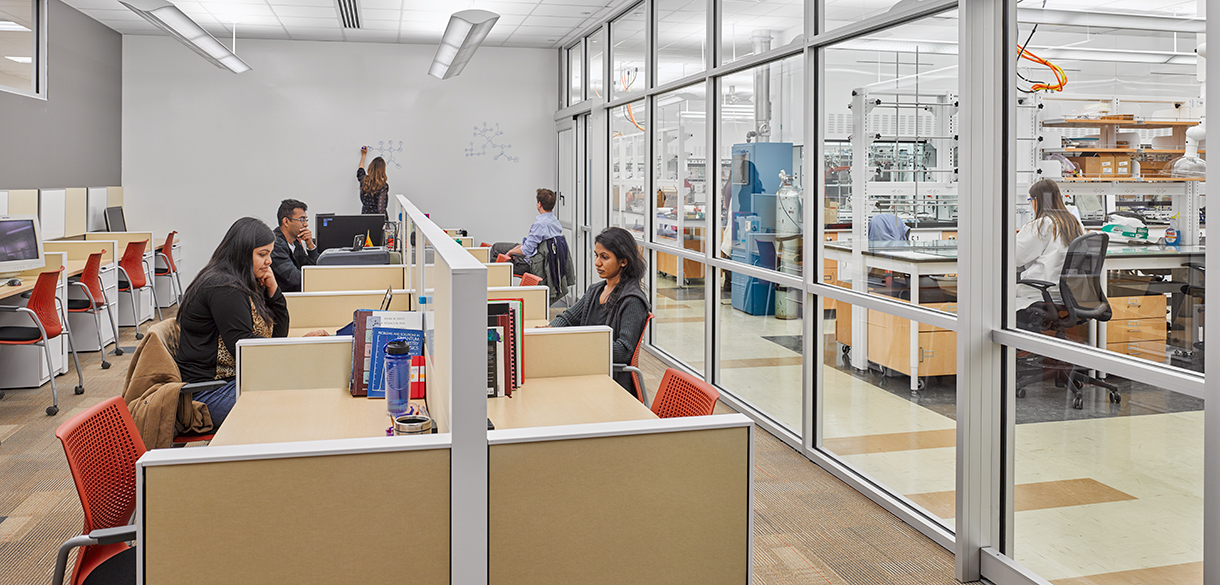 Bench space for active experiments and workspace to analyze and write up notes feel connected thanks to interior transparency.
Bench space for active experiments and workspace to analyze and write up notes feel connected thanks to interior transparency.
Embracing a new model of how students and researchers investigate and learn, the renovation of Rieveschl Hall at the University of Cincinnati puts the mechanics of biology and chemistry experiments on display and makes the process of collaboration and discovery more visible and open. The updates to the building’s labs do more than create an environment where researchers want to be, they help make the work of research more precise through better technology, equipment, and ventilation.
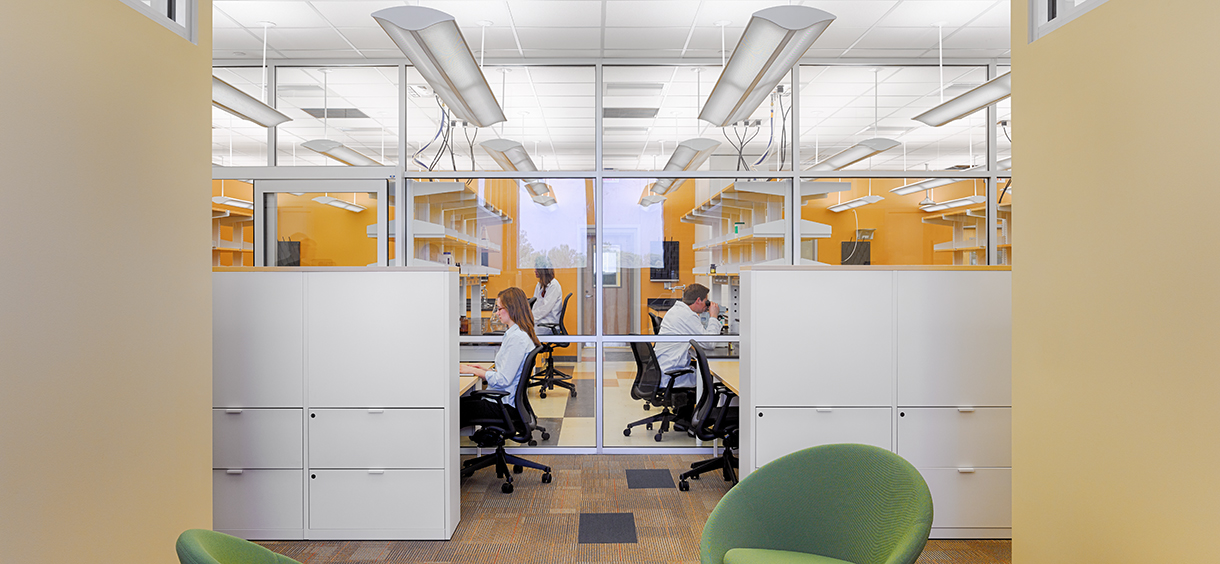 Daylight can penetrate deeper into the building thanks to more interior transparency.
Daylight can penetrate deeper into the building thanks to more interior transparency.
Originally constructed in the 1960s, Rieveschl Hall’s lab spaces felt siloed and closed off from each other and it was hard for students working in the building to feel connected to the rest of campus. Greater transparency within the labs creates better views to the surrounding landscape and allows more daylight to permeate the interior.
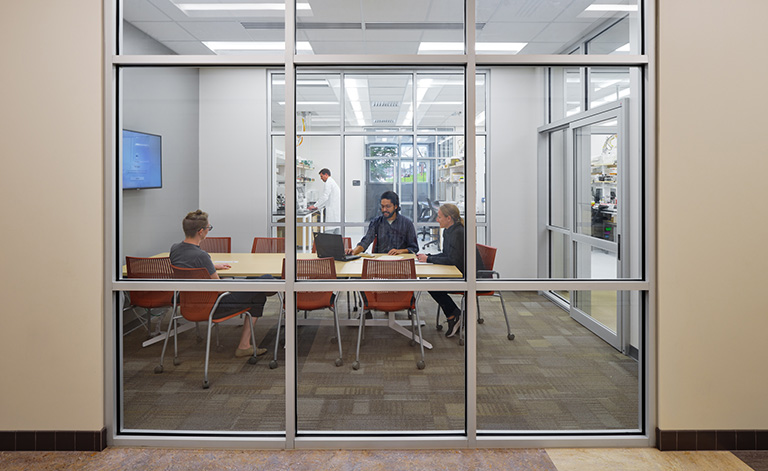 Lab space for active experimentation and meeting space for ideation, analysis, and conversation are better connected post renovation.
Lab space for active experimentation and meeting space for ideation, analysis, and conversation are better connected post renovation.
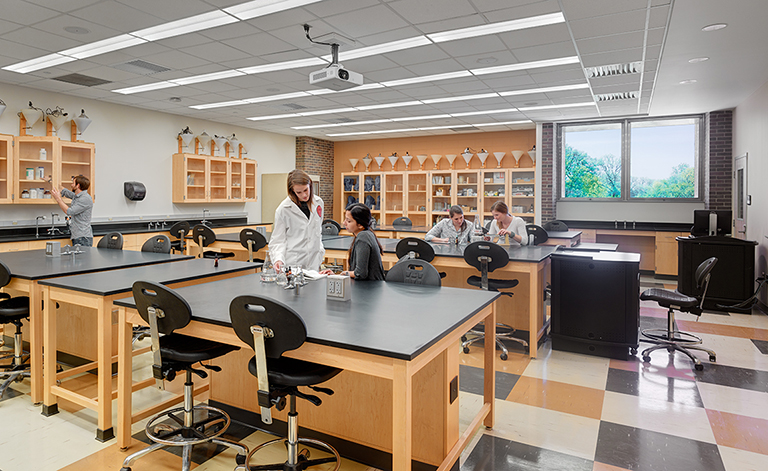 Views out help ground and orient students around where they are on campus. Improved lighting and ventilation help make their work more precise.
Views out help ground and orient students around where they are on campus. Improved lighting and ventilation help make their work more precise.
Snakes like specific temperatures. Spiders dislike building vibrations during mating season. Research doesn’t stop for construction. This project was thoughtfully and strategically phased to avoid disrupting research work, some of which goes on 24 hours a day. Working with researchers on a clear communication plan meant their work could carry on uninterrupted.
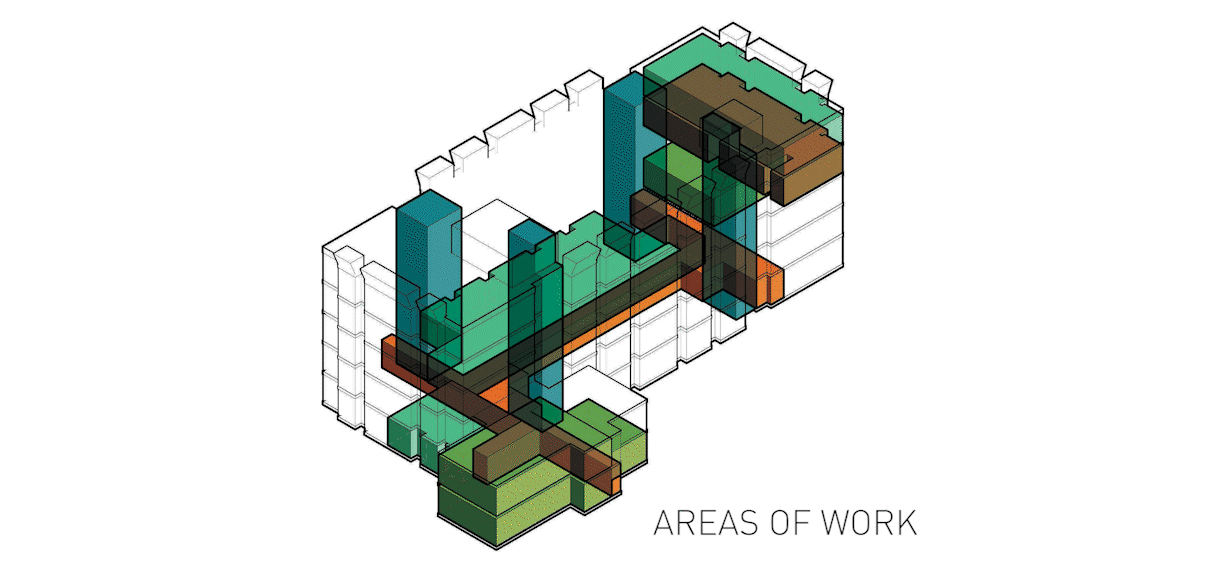 Throughout this multi-year, multi-phased renovation, everything—from lab space to stairwell—was addressed and enhanced to improve research outcomes. The renovation makes the work of research more precise through better, technology, equipment, and ventilation.
Throughout this multi-year, multi-phased renovation, everything—from lab space to stairwell—was addressed and enhanced to improve research outcomes. The renovation makes the work of research more precise through better, technology, equipment, and ventilation.
World-changing ideas grow in labs, but they’re born over coffee. We helped make those interactions more likely by relocating mechanical units to the roof and moving their accompanying shafts. Now there is more student interaction space, including a pantry, a kitchenette, a conference room, a study area, and work areas for graduate students to inspire and inform each other.
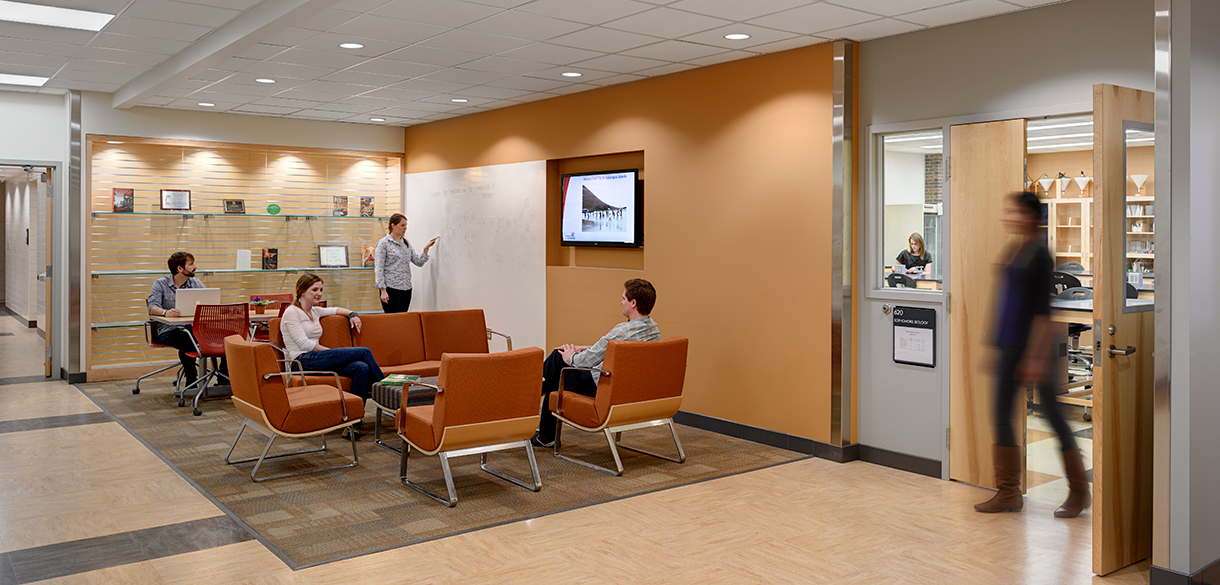 Beyond the bench: Additional space for collaborating in a more social setting was found by relocation of the mechanical units and shafts.
Beyond the bench: Additional space for collaborating in a more social setting was found by relocation of the mechanical units and shafts.



